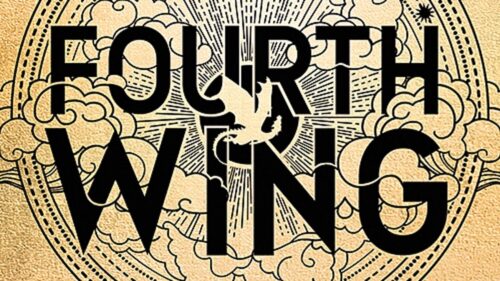It’s no surprise that Fourth Wing has taken BookTok by storm—Rebecca Yarros’ hit romantasy delivers high-stakes action, dragons, and a sizzling romance that’s hard to put down. While I’m a big fan of the book, I can’t deny that it’s not without its flaws. Perfect fantasy novels are few and far between, and even the most beloved titles have their weak spots. In the case of this first installment in The Empyrean Series, readers on Goodreads and beyond have pointed out several recurring criticisms that are worth considering.

6. Xaden and Violet’s relationship doesn’t quite deliver on the classic enemies-to-lovers trope.
Fourth Wing is often marketed as an enemies-to-lovers romance, but many readers take issue with that label when it comes to Violet and Xaden’s dynamic. A common critique is that the two aren’t truly enemies in the first Empyrean novel — their transition from wary acquaintances to friends (and eventually lovers) happens too quickly for the trope to fully land. I tend to agree. Especially in light of Iron Flame’s ending, where it’s revealed that Xaden had been protecting Violet all along, it becomes clear that the tension between them was never truly antagonistic.
5. Parts of Fourth Wing’s world-building leave a lot of unanswered questions.
Fourth Wing has faced criticism for its world-building, and while I wouldn’t call it underdeveloped, there are definitely aspects that feel illogical. One of the most puzzling elements is Navarre’s method of training new soldiers and dragon riders. Basgiath War College appears more focused on weeding out cadets through brutal trials than actually preparing them for battle — a strange strategy given the looming threats and the nation’s apparent shortage of fighters. The system seems more self-destructive than strategic.
4. The use of modern language in Fourth Wing can feel jarring in its fantasy setting.
The writing style in Fourth Wing has drawn some criticism from reviewers. While I don’t mind concise, fast-paced prose, there are moments—particularly in the dialogue and Violet’s inner thoughts—that pull me out of the story. This trend isn’t unique to Fourth Wing; many romantasy novels today lean heavily into modern slang and casual phrasing that can feel out of place in a fantasy setting. When not handled with care, this stylistic choice can be jarring—and there are definitely times in Fourth Wing when it doesn’t quite land.
3. The plot twists in Fourth Wing can feel a bit predictable.
Fourth Wing often gets called out for its predictability, and that’s especially apparent in how it handles Dain. The story seems to set up a love triangle early on, and it feels like we’re meant to be shocked by Dain’s betrayal at the end. But for me, that twist didn’t land as a surprise. From the start, the narrative paints Dain in a consistently negative light — he undermines Violet, doubts her abilities, and constantly clashes with her decisions. It’s hard to believe they were ever meant to be a viable romantic pairing, even from the first chapter.
2. Fourth Wing could have told the same story in fewer pages.
Another common critique of Fourth Wing—and one that carries into its sequels—is that it’s longer than it needs to be. Personally, the length didn’t bother me, especially given the fast-paced plot, but I can see where readers are coming from. At over 500 pages, Fourth Wing moves quickly, yet there are moments in the middle that feel like they could have been tightened. While this pacing issue becomes more pronounced in Iron Flame and Onyx Storm, it’s still a fair observation for the first book.
1. Fourth Wing Shares Many Elements With Other Popular Fantasy Novels
Some critics argue that Fourth Wing borrows heavily from other popular fantasy novels, and it’s easy to see where those comparisons come from. The book features familiar tropes—like brooding “shadow daddies” and elemental powers—that are staples in the romantasy genre. Its use of lightning abilities, for instance, has drawn parallels to Shadow and Bone, though the execution and world-building are different enough to set them apart. Similarly, Fourth Wing shares certain themes and dynamics with A Court of Thorns and Roses, which might help explain why both series have become BookTok sensations.

